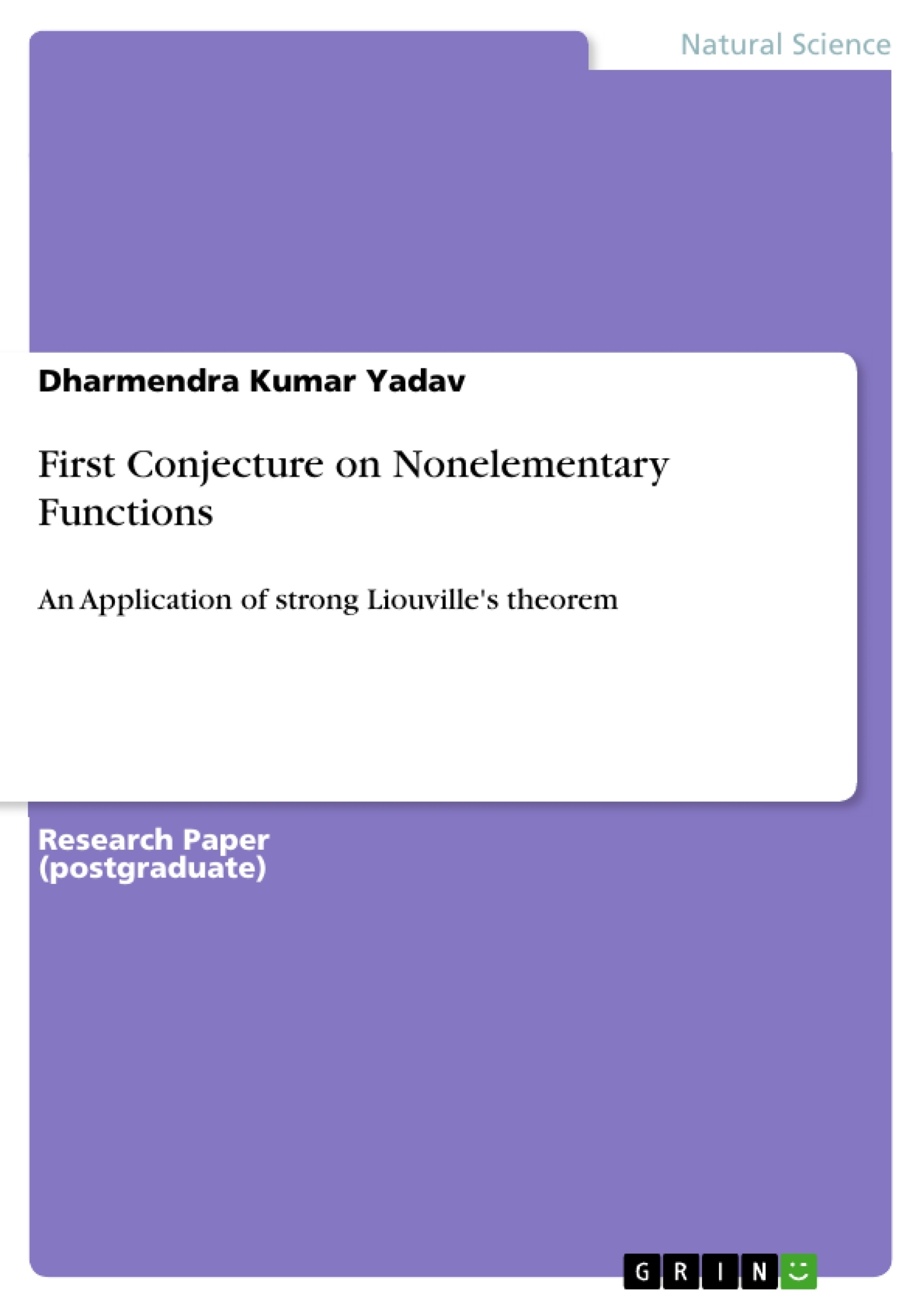In the paper the proof of one of the Yadav’s six conjectures of indefinite nonintegrable functions, classically known as nonelementary functions, and their examples have been discussed by applying strong Liouville’s theorem, its special case, some well-known nonelementary functions and properties mentioned by Marchisotto & Zakeri.
Frequently asked questions
What is the first conjecture on nonelementary functions presented in the document?
The first conjecture, attributed to Yadav & Sen [6, 7], states that an indefinite integral of the form ∫ ef'(x) f(x) dx, where f(x) is a polynomial function of degree 2, or a trigonometric (not inverse trigonometric) function, or a hyperbolic (not inverse hyperbolic) function is always nonintegrable, i.e., nonelementary.
How is Case I (f(x) is an algebraic function of degree 2) proven?
The proof involves assuming that ∫ ef'(x) f(x) dx = g(x)ef(x), applying the strong Liouville theorem (special case), and showing that no such rational function R(x) exists that satisfies the necessary identity for the integral to be elementary. This involves analyzing the degrees of polynomials in the derived equations and arriving at contradictions.
What are some specific examples of nonelementary functions derived in this document?
The document gives the following examples of nonelementary functions: ∫ ex2 dx, ∫ eax2 dx (a≠0), ∫ e-x2 dx, ∫ ex/x dx, ∫ ex/x2 dx, ∫ sinx/x dx, ∫ cosx/x dx
How are trigonometric functions treated in the document when f(x) is not an inverse trigonometric function?
Trigonometric functions such as sine, cosine, and tangent are considered individually. For example, with sine functions, the document performs substitutions (sinx = z) and analyzes subcases where (x) is linear or of degree 2, ultimately proving that the integral is nonelementary by contradiction or applying Liouville's theorem.
What is the strong Liouville theorem used for in this document?
The strong Liouville theorem is used as a key tool in proving that certain integrals are nonelementary. It helps establish whether a function can be expressed in terms of elementary functions, often by analyzing whether a rational function satisfying specific conditions exists.
What are some references used?
Some references used in the document include:
- Hardy G. H., The Integration of Functions of a Single Variable, 2nd Ed., Cambridge University Press, London, Reprint 1928, 1916
- Ritt J. F., Integration in Finite Terms: Liouville's Theory of Elementary Methods, Columbia University Press, New York, 1948
- Risch R. H., The Problem of Integration in Finite Terms, Transactions of the American Mathematical Society, 139, 167-189, 1969
- Rosenlicht M., Integration in Finite Terms, The American Mathematical Monthly, 79:9, 963-972, 1972
- Marchisotto E. A. & Zakeri G. A., An Invitation to Integration in Finite Terms, The College Mathematics Journal, Mathematical Association of America, 25:4, 295- 308, 1994
- Yadav D. K. & Sen D. K., Revised paper on Indefinite Nonintegrable Functions, Acta Ciencia Indica, 34:3, 1383-1384, 2008
- Yadav D. K., A Study of Indefinite Nonintegrable Functions, Ph. D. Thesis, Vinoba Bhave University, Hazaribag, Jharkhand, 2012, Online: GRIN Verlag, Munich, Germany, ISBN: 9783668312784, www.grin.com/ebook/341510/
- Arbeit zitieren
- Dharmendra Kumar Yadav (Autor:in), 2012, First Conjecture on Nonelementary Functions, München, GRIN Verlag, https://www.hausarbeiten.de/document/342263


